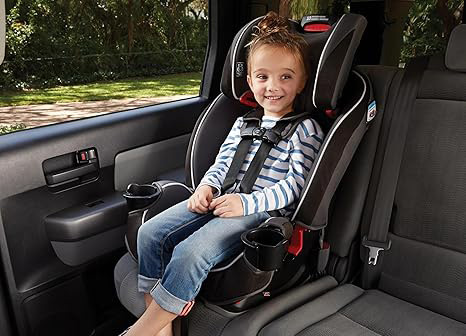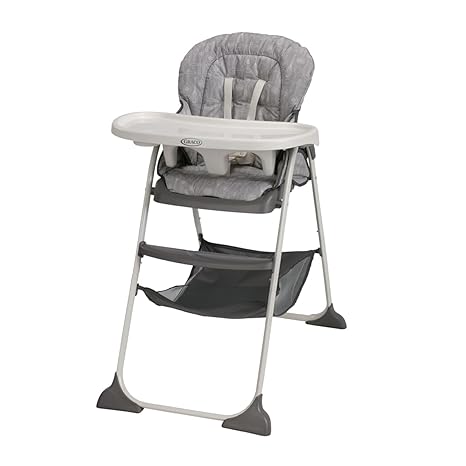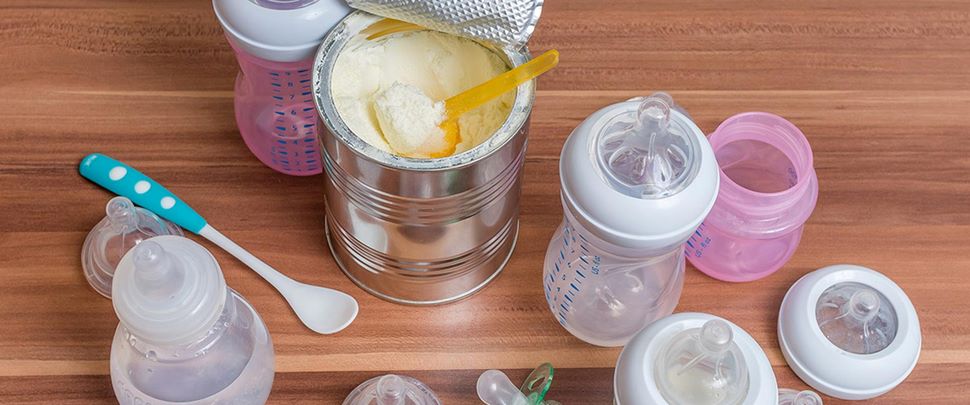
Essential Tips for Buying Safe and Practical Baby Products
Navigating the world of baby products can be overwhelming, especially for first-time parents. With a vast array of options available, it’s crucial to focus on safety, practicality, and quality. This guide will walk you through everything you need to know about selecting the best baby products, ensuring your little one’s comfort and safety. We’ll cover key considerations, essential product categories, and tips for making informed decisions. By the end of this guide, you’ll be equipped with the knowledge needed to confidently purchase baby products that meet your needs and those of your child.
Understanding Safety Standards and Certifications
1. Why Safety Standards Matter
When it comes to baby products, safety is the top priority. Regulatory bodies in various countries set safety standards to ensure products are safe for infants and toddlers. These standards cover everything from the materials used to the product’s design and functionality.
2. Key Certifications to Look For
CPSC (Consumer Product Safety Commission): In the United States, the CPSC sets safety standards for baby products. Look for products that meet or exceed these standards.
JPMA (Juvenile Products Manufacturers Association): This certification ensures that a product has been tested and meets the highest safety standards in the industry.
ASTM (American Society for Testing and Materials): ASTM standards are used globally to ensure products meet specific safety criteria.
3. International Safety Standards
If you’re purchasing products from other countries, it’s essential to understand their safety standards. For example, the European Union has the CE mark, which indicates that a product meets EU safety, health, and environmental protection requirements.
Key Considerations When Choosing Baby Products
1. Age Appropriateness
Selecting age-appropriate products is crucial for your baby’s safety and development. Ensure that toys, furniture, and other items are suitable for your child’s age group.
2. Material Safety
Babies are prone to putting objects in their mouths, so it’s vital to choose products made from non-toxic materials. Look for labels that state “BPA-free,” “phthalate-free,” or “lead-free.”
3. Ease of Cleaning
Babies can be messy, and their products should be easy to clean. Look for items with removable, machine-washable covers or surfaces that can be wiped down easily.
4. Durability
Babies grow quickly, and their needs change rapidly. Invest in products that are durable and can withstand wear and tear over time.
5. Functionality and Practicality
While some baby products may look appealing, they should also serve a practical purpose. Consider how often you’ll use the product and whether it meets your specific needs.
Essential Baby Product Categories
When it comes to selecting baby products, it’s important to focus on the essentials that will ensure your baby’s safety, comfort, and development. Here’s a breakdown of key product categories every parent should consider:
1. Cribs and Sleeping Arrangements

Safety Considerations: Ensure the crib meets current safety standards, with slats no more than 2 3/8 inches apart to prevent any potential entrapment hazards. Avoid drop-side cribs, which have been phased out in many regions due to safety concerns.
Materials: Opt for cribs made from solid wood with non-toxic finishes to ensure your baby’s safety.
Mattresses: A firm, well-fitting mattress is crucial to reduce the risk of Sudden Infant Death Syndrome (SIDS). Always ensure that the mattress is designed to fit snugly within the crib with no more than two fingers’ width between the mattress and the crib sides.
2. Car Seats

Types of Car Seats: There are three primary types to consider—infant car seats, convertible car seats, and booster seats. Choose one that aligns with your baby’s age, size, and weight.
Installation: Proper installation is key. Many car seats feature LATCH systems to simplify the installation process. Always double-check the fit to ensure maximum safety.
Expiration Dates: Car seats have expiration dates, usually ranging from six to ten years. Always verify that the car seat is within its usable life, particularly if buying second-hand.
3. Strollers

Safety Features: Look for strollers equipped with a five-point harness, reliable brakes, and a stable base to prevent tipping.
Types of Strollers: Full-sized strollers, lightweight strollers, jogging strollers, and travel systems each serve different purposes. Select one that suits your lifestyle and needs.
Maneuverability: The stroller should be easy to steer and navigate through various terrains, whether you’re in the city or a suburban area.
4. High Chairs

Safety Features: A sturdy base, a secure safety harness, and locking wheels (if applicable) are essential for a safe high chair.
Adjustability: Choose a high chair with adjustable height and reclining options to accommodate your growing child.
Ease of Cleaning: Removable, dishwasher-safe trays and wipeable surfaces are practical features that simplify cleaning after messy meals.
5. Baby Monitors

Types of Monitors: Audio-only, video, and smart monitors are available, each offering different levels of surveillance. Select one based on your comfort level and needs.
Range and Battery Life: Ensure the monitor’s range is sufficient for your home size, and that the battery life will last through the night or nap times.
Additional Features: Some monitors offer extras such as temperature sensors, lullabies, and two-way communication, which can enhance convenience and peace of mind.
6. Diapering Essentials
Diapers: Whether disposable or cloth, choose diapers that are soft, absorbent, and free from harmful chemicals. Consider hypoallergenic options if your baby has sensitive skin.
Changing Tables: Opt for a sturdy changing table with safety straps and raised sides to prevent accidents. Additional storage for diapers, wipes, and other essentials is a bonus.
Diaper Bags: A good diaper bag should have multiple compartments, insulated bottle holders, and be made from easy-to-clean materials. It’s essential for on-the-go diaper changes.
7. Feeding Supplies

Bottles and Nipples: Look for BPA-free bottles with nipples that match your baby’s age and feeding needs, ensuring a comfortable feeding experience.
Breast Pumps: If you’re breastfeeding, a high-quality breast pump is a valuable investment. Electric pumps are generally more efficient than manual ones, saving time and effort.
High Chairs: As mentioned earlier, high chairs should be safe, adjustable, and easy to clean, making mealtime more manageable.
8. Toys and Entertainment

Age-Appropriate Toys: Select toys that match your baby’s developmental stage, steering clear of those with small parts that could pose choking hazards.
Material Safety: Toys should be made from non-toxic materials, free from harmful substances like BPA, lead, and phthalates.
Educational Value: Choose toys that stimulate learning and development, such as those that encourage motor skills, sensory exploration, and problem-solving.
9. Soft Baby Floor Mats
Safety and Comfort: Soft baby floor mats provide a safe and cushioned space for your baby to play and explore. Look for mats made from non-toxic, hypoallergenic materials that are free from harmful chemicals.
Ease of Cleaning: Babies can be messy, so choose mats that are easy to clean, whether through simple wipe-downs or machine washing.
Developmental Benefits: Soft floor mats offer a comfortable surface that encourages tummy time, crawling, and other physical activities essential for your baby’s development.
Design and Functionality: Many baby floor mats come in interlocking puzzle pieces, which can be configured to fit various spaces. Choose a design that suits your home decor and provides ample space for your baby to move around safely.
Latest Data and Trends in Baby Products
1. Sustainability in Baby Products
With the growing awareness of environmental issues, more parents are opting for eco-friendly baby products. These include organic cotton clothing, biodegradable diapers, and sustainably sourced wooden toys. Brands that prioritize sustainability often use minimal packaging, non-toxic materials, and ethical manufacturing processes.
2. Smart Baby Products
The rise of smart technology has extended into the baby product market. Smart cribs, baby monitors with AI features, and wearable devices that track your baby’s vitals are becoming increasingly popular. While these products offer convenience and peace of mind, it’s essential to evaluate their necessity and effectiveness.
3. Multi-functional Products
To save space and money, many parents are opting for multi-functional baby products. These include cribs that convert into toddler beds, strollers that double as car seats, and high chairs that can be used as boosters. When choosing multi-functional products, ensure each function is safe and practical.
4. Increased Focus on Health and Wellness
Health and wellness trends are influencing baby product choices, with a focus on organic, non-toxic, and allergen-free items. This trend includes organic baby food, skincare products free from parabens and sulfates, and hypoallergenic bedding. Parents are becoming more discerning about the products they choose, prioritizing their baby’s health and well-being.
Practical Tips for Purchasing Baby Products
1. Research and Read Reviews
Before purchasing any baby product, take the time to research and read reviews from other parents. Websites like Consumer Reports, BabyGearLab, and Amazon provide valuable insights into product quality, safety, and usability. Look for reviews that mention long-term use and potential issues.
2. Consider Your Lifestyle
Choose products that fit your lifestyle and living situation. For example, if you live in a small apartment, opt for compact, foldable items that save space. If you travel frequently, look for portable products like travel cribs, lightweight strollers, and compact diaper bags.
3. Set a Budget
Baby products can be expensive, but it’s possible to find high-quality items within your budget. Prioritize essential items like car seats, cribs, and strollers, and consider buying second-hand for less critical items. However, always ensure second-hand products meet current safety standards.
4. Check Return Policies
Babies can be unpredictable, and what works for one might not work for another. Before making a purchase, check the store’s return policy to ensure you can return or exchange the product if it doesn’t meet your expectations.
5. Join Parenting Communities
Online parenting communities are a great resource for advice and recommendations. Websites like BabyCenter, The Bump, and Reddit’s parenting forums offer a wealth of information from experienced parents. You can ask questions, share concerns, and get feedback on specific products.
6. Avoid Impulse Buys
It’s easy to get carried away with cute baby products, but it’s important to stick to your list of essentials. Before making a purchase, ask yourself if the product is necessary, practical, and safe for your baby.
Where to Buy Quality Baby Products

When it comes to buying baby products, there are several reliable options available, each offering unique benefits. Here’s a guide to the best places to purchase high-quality baby items.
1. Online Retailers
Amazon: Renowned for its extensive selection and user-generated reviews, Amazon is a top choice for parents. You can find a wide variety of baby products, from essentials to specialized items. Always prioritize products with high ratings and a significant number of reviews to ensure quality.
Buy Buy Baby: Specializing in baby products, Buy Buy Baby offers a comprehensive range of items, often with the added benefit of in-store demonstrations and expert advice. Their online platform is user-friendly, making it easy to shop from home.
Target: Target strikes a good balance between quality and affordability. With a broad selection of baby products available both in-store and online, it’s a convenient option for parents looking for reliable and budget-friendly items.
2. Specialty Stores
Pottery Barn Kids: Known for its premium nursery furniture and decor, Pottery Barn Kids also provides a curated selection of safe and stylish baby products. Their items are crafted with quality and aesthetics in mind, making them a popular choice for discerning parents.
The Tot: Focusing on non-toxic, sustainable products, The Tot offers a carefully curated collection of baby essentials. This online store is ideal for parents who prioritize eco-friendly and safe products for their children.
Crate and Kids: As a division of Crate and Barrel, Crate and Kids offers modern, functional baby products with a strong emphasis on design. Their offerings include everything from nursery furniture to toys, all designed to blend seamlessly with contemporary home decor.
3. Second-Hand Stores
Once Upon a Child: This chain of stores specializes in gently used baby products, ranging from clothing to furniture. Purchasing second-hand can be a cost-effective way to obtain high-quality items at a fraction of the price of new ones. Always ensure that products meet current safety standards.
Facebook Marketplace: A popular platform for buying and selling second-hand baby products locally. Facebook Marketplace offers the convenience of finding items within your community. However, it’s important to carefully inspect products and verify their safety before purchasing.
4. Supplier’s Own Websites
Many baby product manufacturers and suppliers have their own websites where you can purchase products directly. Buying from a supplier’s website offers several advantages:
Exclusive Products and Offers: Some suppliers offer products or color variations that are exclusive to their website, along with special promotions or discounts that you won’t find elsewhere.
Product Authenticity and Latest Releases: Purchasing directly from the supplier ensures that you’re getting authentic products. Additionally, you might have access to the latest releases and new product lines before they become available on other platforms.
Better Customer Support: When you buy directly from the supplier, you often receive better customer support, as the supplier can provide detailed product information, handle warranty claims directly, and offer personalized service.
Popular baby product brands that sell directly through their websites include UPPAbaby, Nuna, Skip Hop and ieBabay, among others. Shopping directly can be particularly advantageous when seeking specific models or newer products that might not yet be available through third-party retailers.
Conclusion
Purchasing baby products can be a daunting task, but by focusing on safety, practicality, and quality, you can make informed decisions that will benefit your child. Remember to consider age-appropriateness, material safety, and ease of cleaning when choosing products. Stay informed about the latest trends, such as sustainability and smart technology, and always prioritize your baby’s health and well-being. By following this guide, you’ll be well on your way to creating a safe and nurturing environment for your little one.



